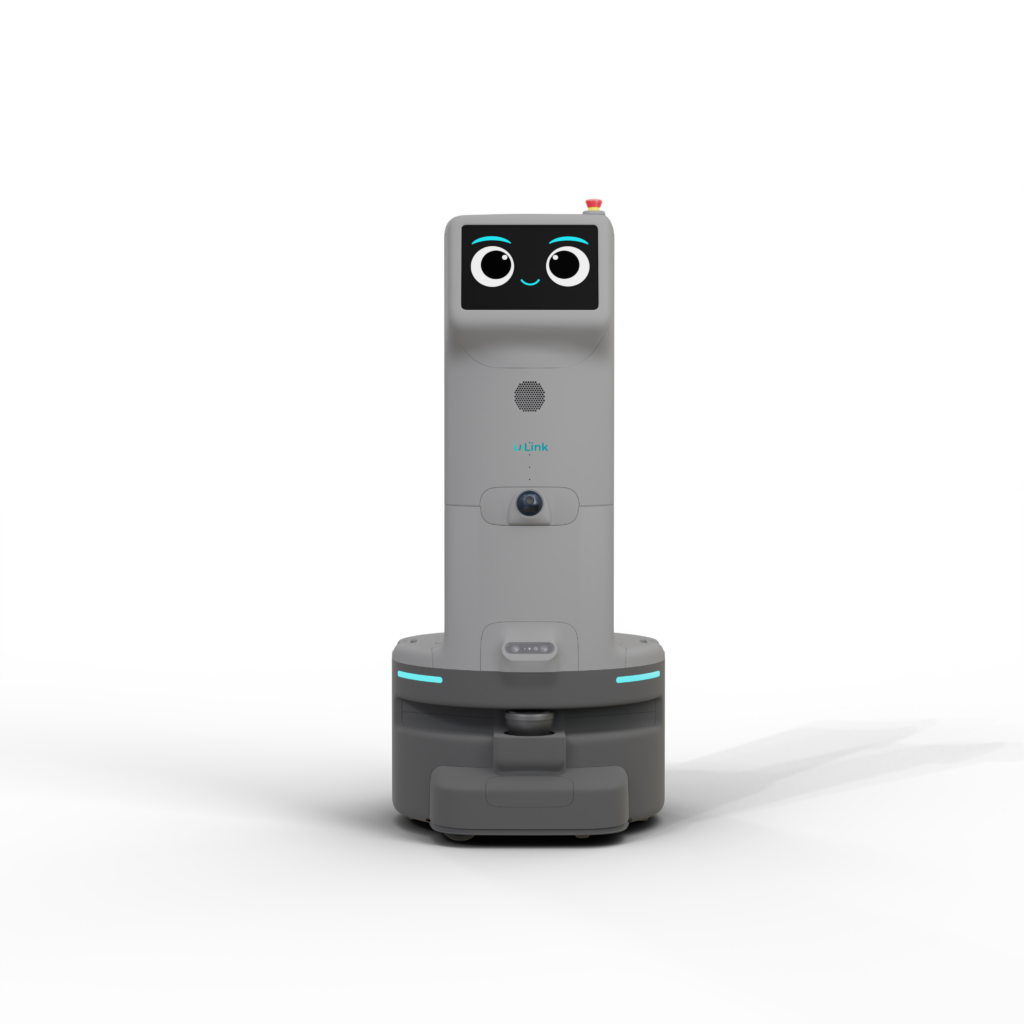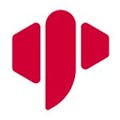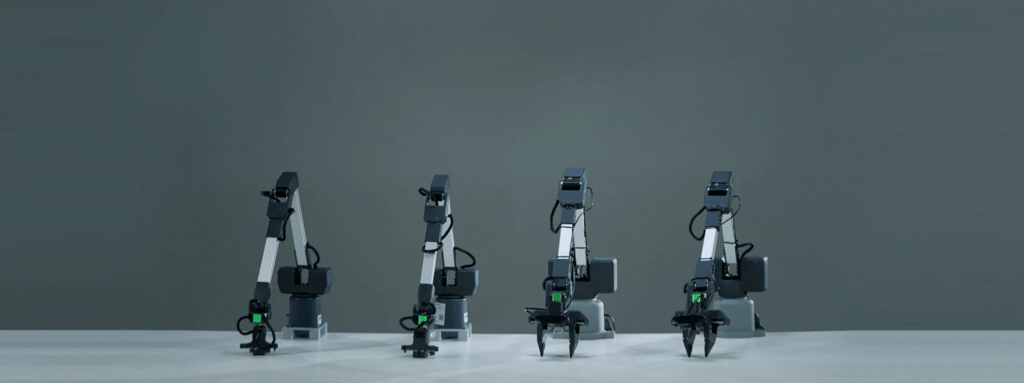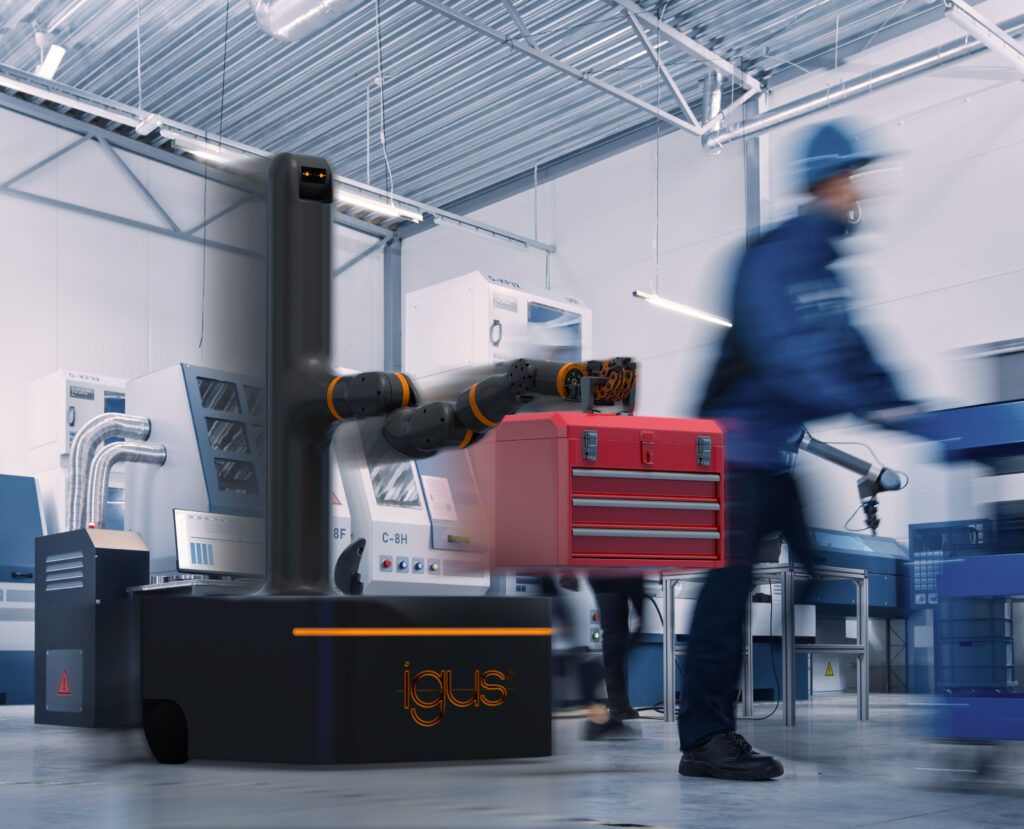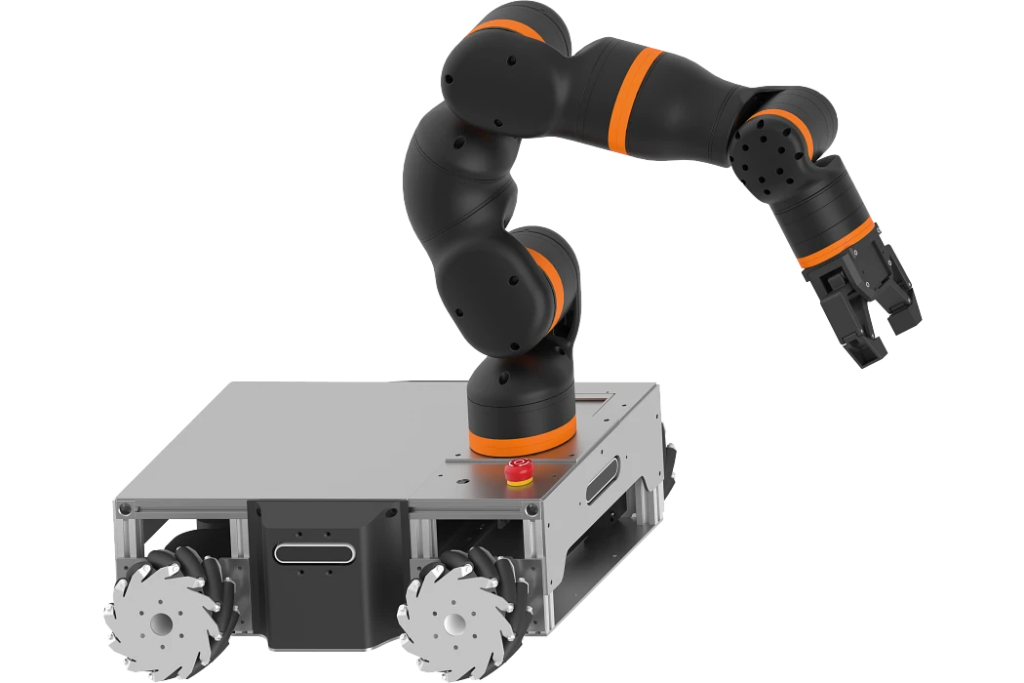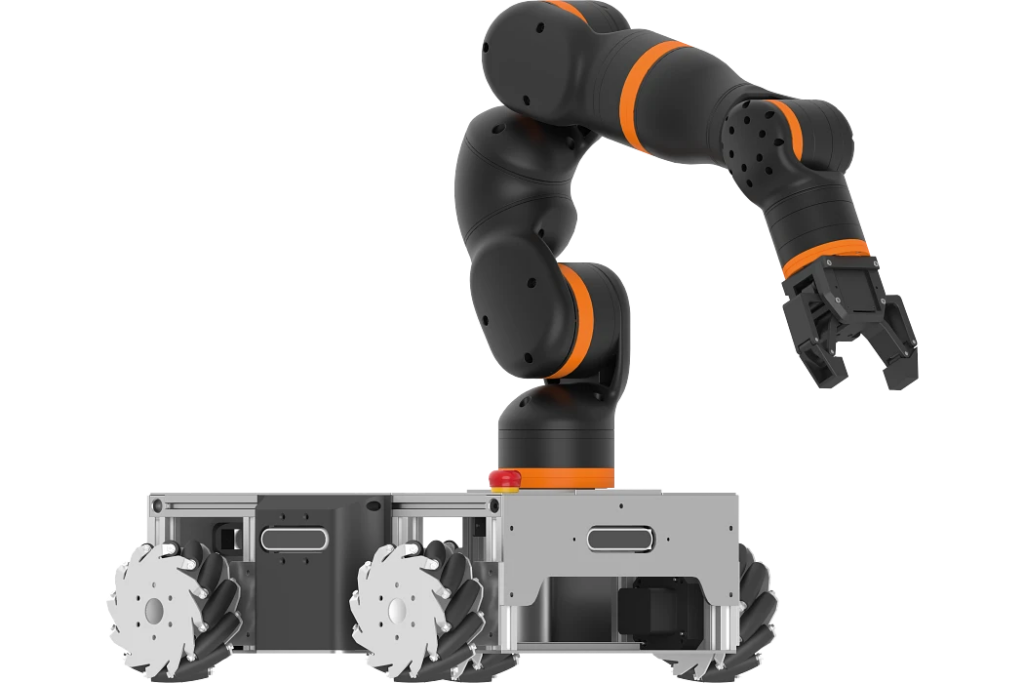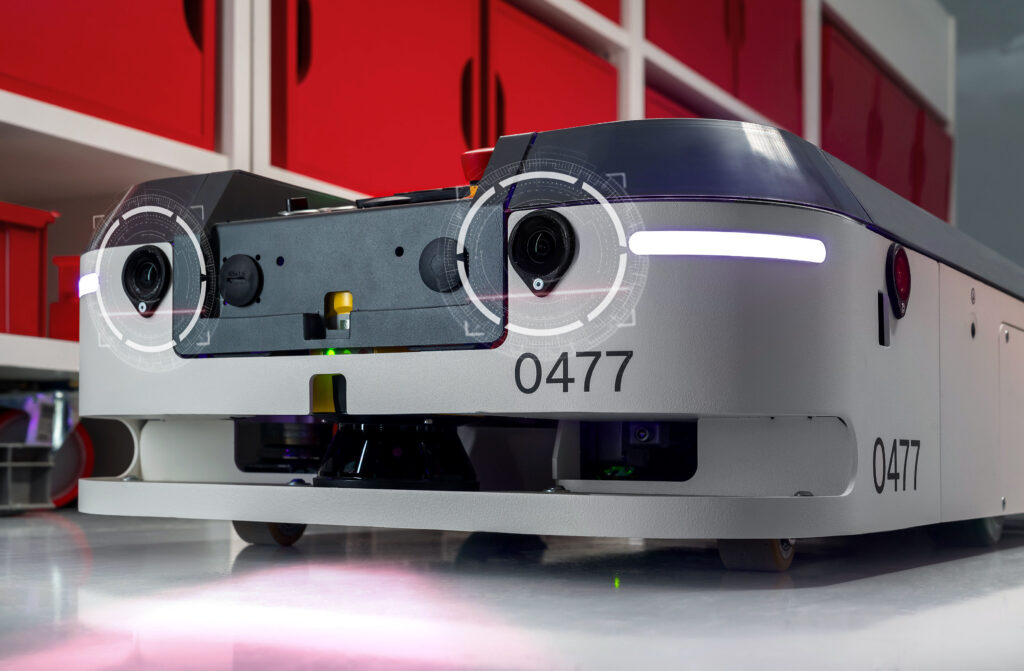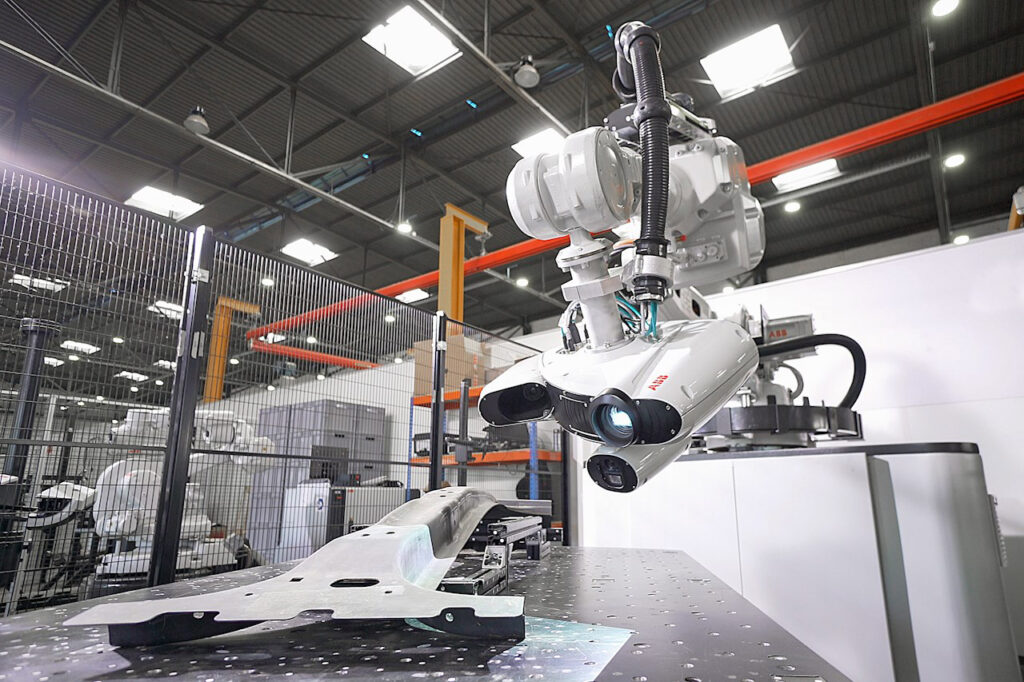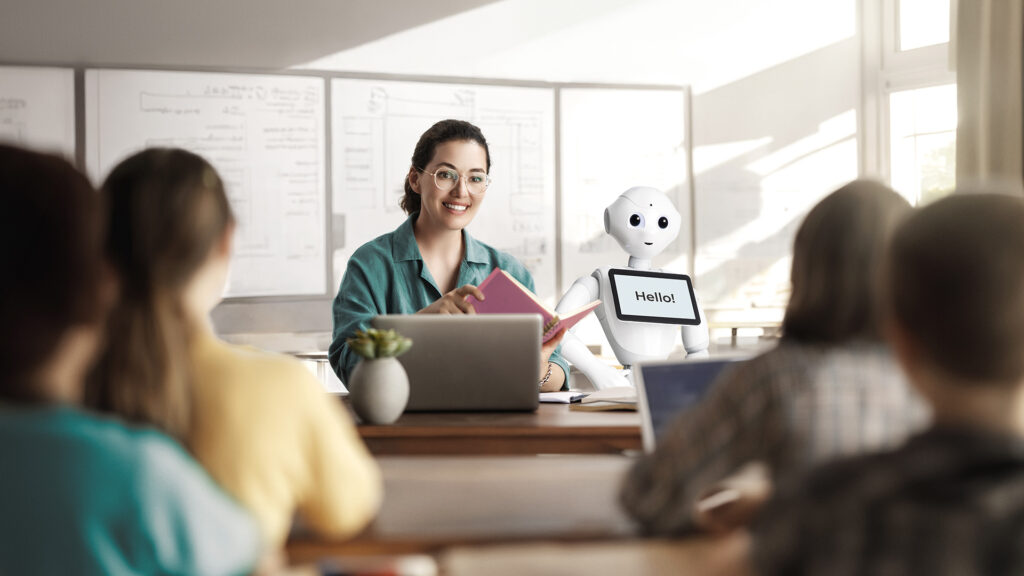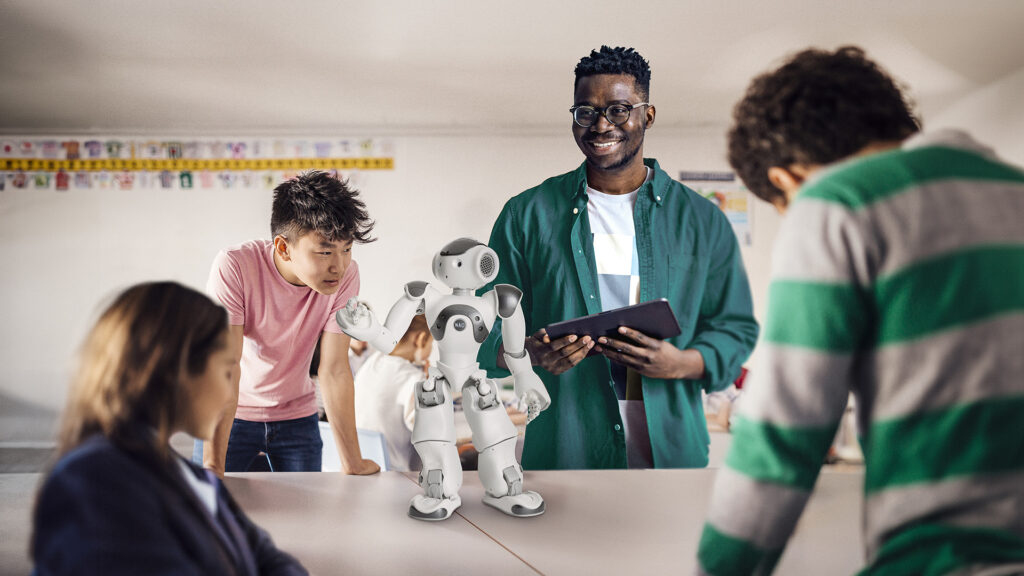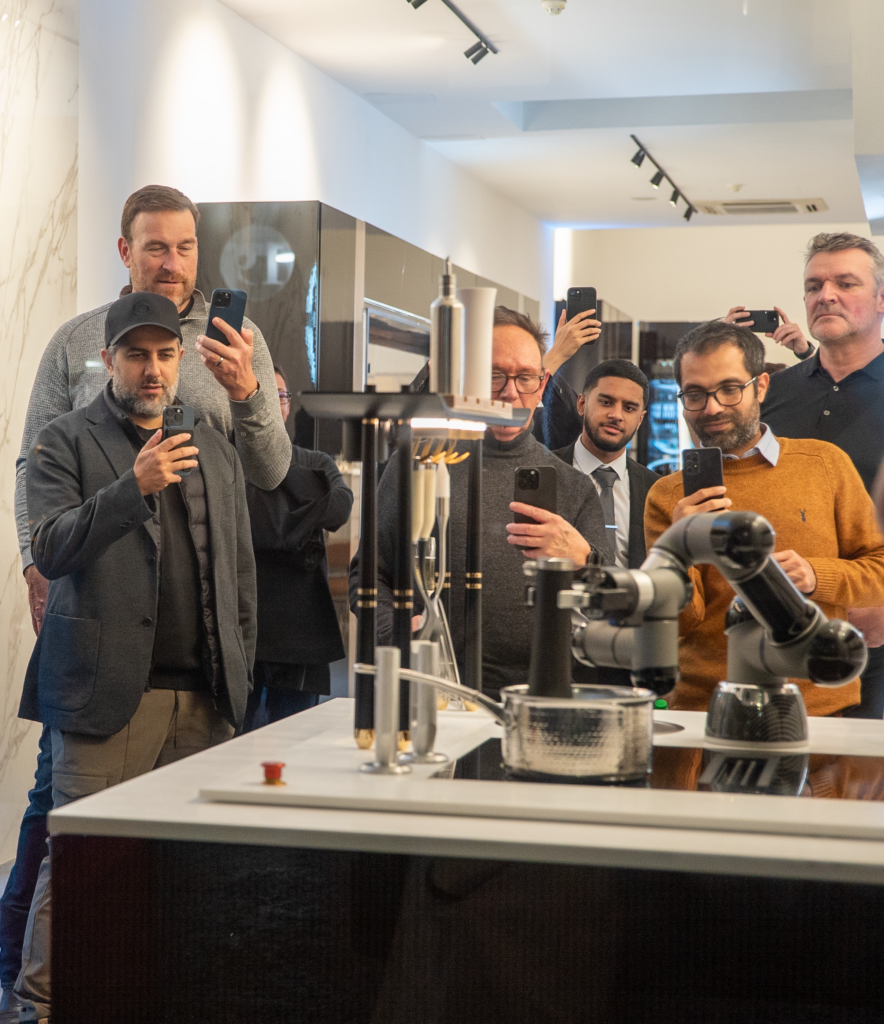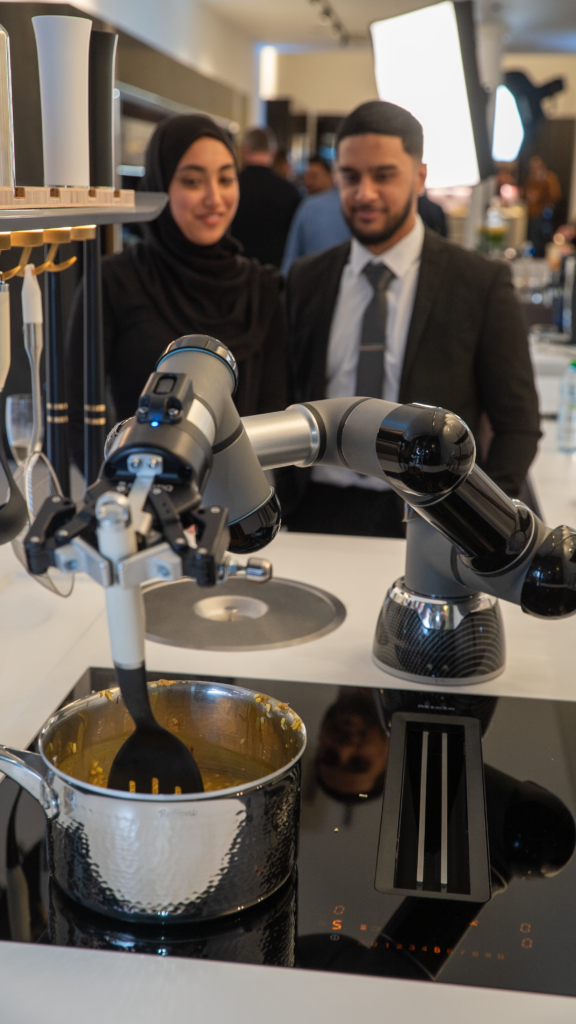- Auf der VivaTech 2024 zeigt die United Robitics Group (URG) die Produktneuheit in Aktion – gemeinsam mit anderen Robotern aus der URG-Flotte, die vollständig an die Bedürfnisse des Einzelhandels angepasst sind.
- uLink ist eine hochflexible, vielseitige Plattform für eine schnelle Anpassung und Unterstützung in Logistik und Automatisierung.
- uLink ist die erste URG-Lösung mit offener API für eine nahtlose Integration in Betriebssysteme und eine größere betriebliche Flexibilität.
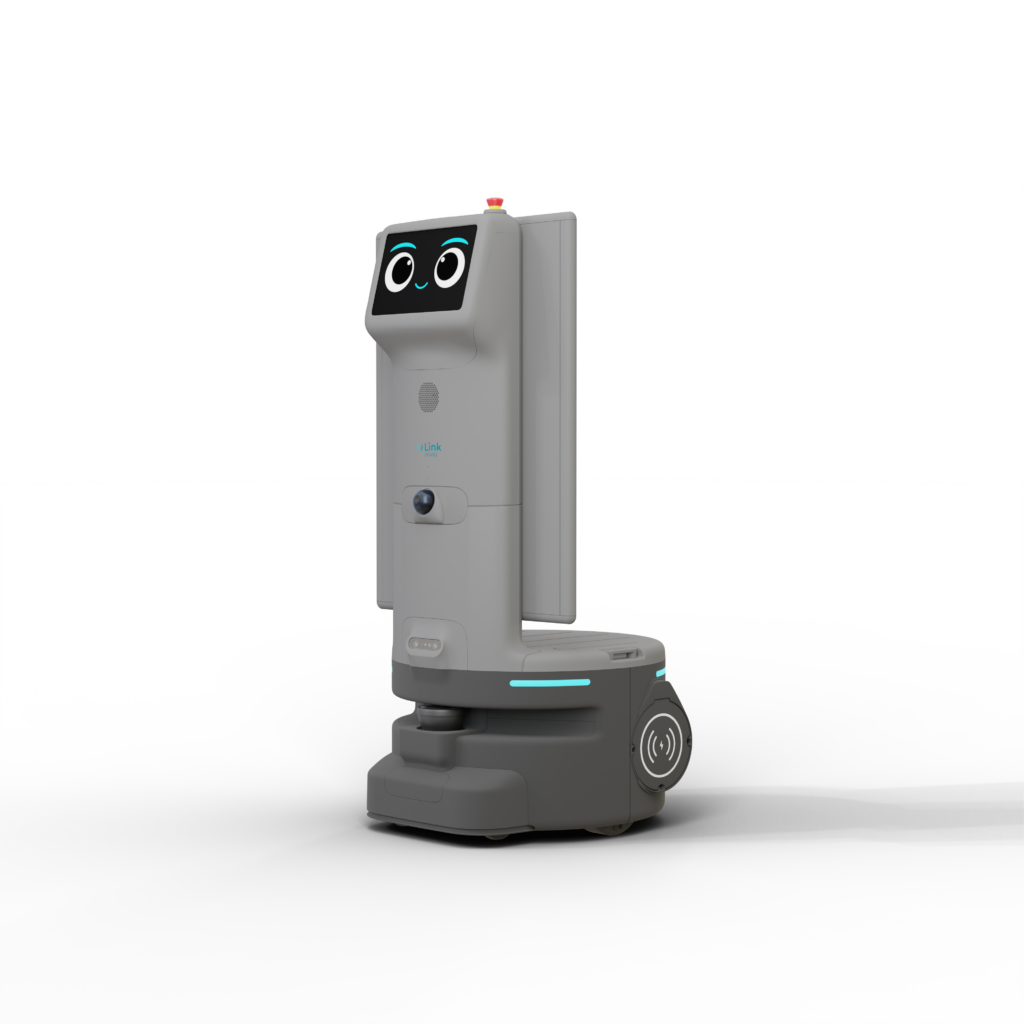
Paris/Bochum, 22. Mai 2024– Die United Robotics Group stellt auf der VivaTech in Paris erstmalig ihre neuen Serviceroboter aus der uLink-Serie vor, die sich durch einfache Integration, flexible Anpassung und individuelle Erweiterungen auszeichnen. Sie eignen sich für den Einsatz im Handel, der Lagerlogistik sowie im Fertigungsbereich. Als europäischer Marktführer für Servicerobotik-Lösungen erweitert die URG ihr CobiotX-Portfolio weltweit um den neuesten Cobiot für integrierte Arbeitsabläufe in den genannten Segmenten. Die modulare Plattform fügt sich nahtlos in die jeweiligen Workflows ein und kann mit Industriestandard-Zubehör erweitert werden. uLink wurde entwickelt, um Betriebsabläufe zu vereinfachen und die Sicherheit und Effizienz in verschiedenen Umgebungen zu erhöhen. Die einzigartige Kombination von Funktionen setzt neue Standards in der Branche – vom modularen Design und der offenen API bis hin zur 3D-LiDAR-basierten Navigation und der Echtzeit-Betriebsdatenvisualisierung.
uLink ist mit IDE-, SDK- sowie Flottenmanagement-Tools ausgestattet und erlaubt die nahtlose Integration und Steuerung verschiedener Komponenten wie LiDARS, Motoren oder Sensoren. Dank leistungsstarker Softwarefunktionen für die Konfiguration und Verwaltung von Roboteranwendungen, aber auch mittels Sensoren und entsprechendem Zubehör kann der Roboter verschiedene logistische Herausforderungen im Handel und in der Lagerhaltung problemlos bewältigen, die je nach Branche, Betriebsgröße und Automatisierungsanforderungen variieren. Die uLink-Zubehörschnittstelle ist ebenfalls modular aufgebaut, so dass die Nutzungsfläche eine Nutzlast von bis zu 60 kg tragen kann. Die SEER-Navigationssteuerung erlaubt Lieferungen in einem vordefinierten Bereich von bis zu 400.000 m².
Mit Hilfe des Plug-and-Play-Mechanismus, können weitere Zubehörkomponenten wie ein Schließfach für Click & Collect oder vertrauliche Lieferungen, ein Pegboard für die Lieferung von Werkzeugen und Ersatzteilen sowie Tabletts für den Transport von Lagerbeständen in die Plattform integriert werden. Darüber hinaus können die Partner-Integratoren neue Zubehörteile entwickeln, um spezifische Anforderungen zu erfüllen.
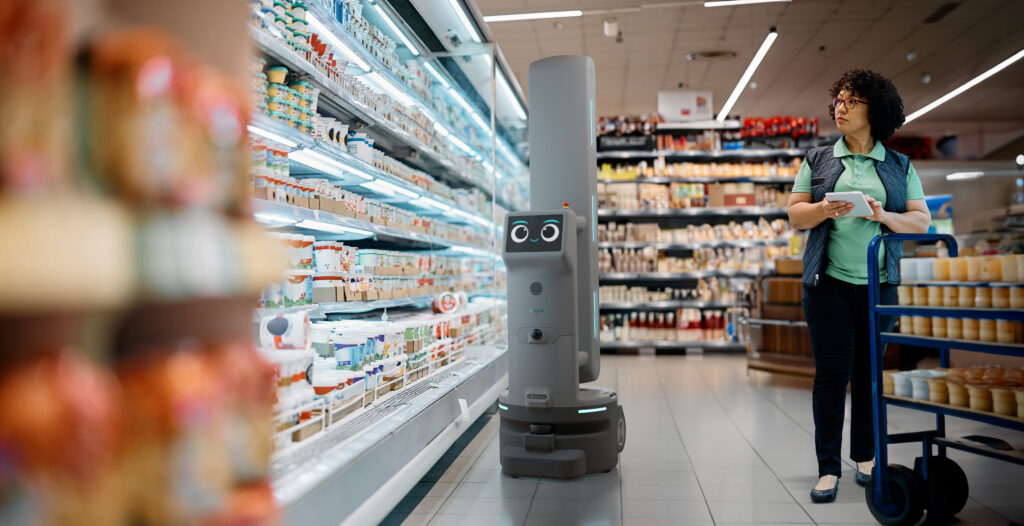
„Der Einzelhandels- und Logistiksektor befindet sich seit Jahren in einem tiefgreifenden Wandel, der mit dem Wachstum des E-Commerce, der Automatisierung und dem Mangel an Fachkräften in der Wertschöpfungskette zusammenhängt. Ob Regalauffüller oder Water-Spider, also Verantwortliche für den Bestand in Lagern oder der Fertigung: Wichtig ist, die Akteure zu unterstützen und Lösungen anzubieten, die den spezifischen Bedürfnissen entsprechen“, erklärt Thomas Linkenheil, Co-CEO der United Robotics Group. „In einem hart umkämpften Sektor wollen die Verbraucher einen zügigen und personalisierten Service. Unsere neue Logistiklösung versetzt Dienstleister in die Lage, einen zeitgemäßen Kundenservice ohne langes Suchen im Warenlager oder mühsame Prozesse anzubieten, die Zeit kosten und das Kundengeschäft beeinträchtigen können.“
Erster Cobiot mit offener API für Konnektivität und Flexibilität
Wie alle CobiotX-Lösungen der United Robotics Group ist auch uLink mit einer besonders benutzerfreundlichen Bedienoberfläche ausgestattet. Sie basiert auf dem No-Code-Prinzip und ermöglicht Anwendern ohne Robotik-Kenntnisse eine schnelle Integration in den täglichen Betrieb. Darüber hinaus verfügt uLink über eine offene API-Plattform. So kann die Lösung mit bestehenden Betriebsabläufen und anderen vernetzten Systemen wie automatischen Türen oder Aufzügen kommunizieren und auch mit anderen Robotern und fahrerlosen Transportfahrzeugen wie AMRs und AGVs zusammenarbeiten.
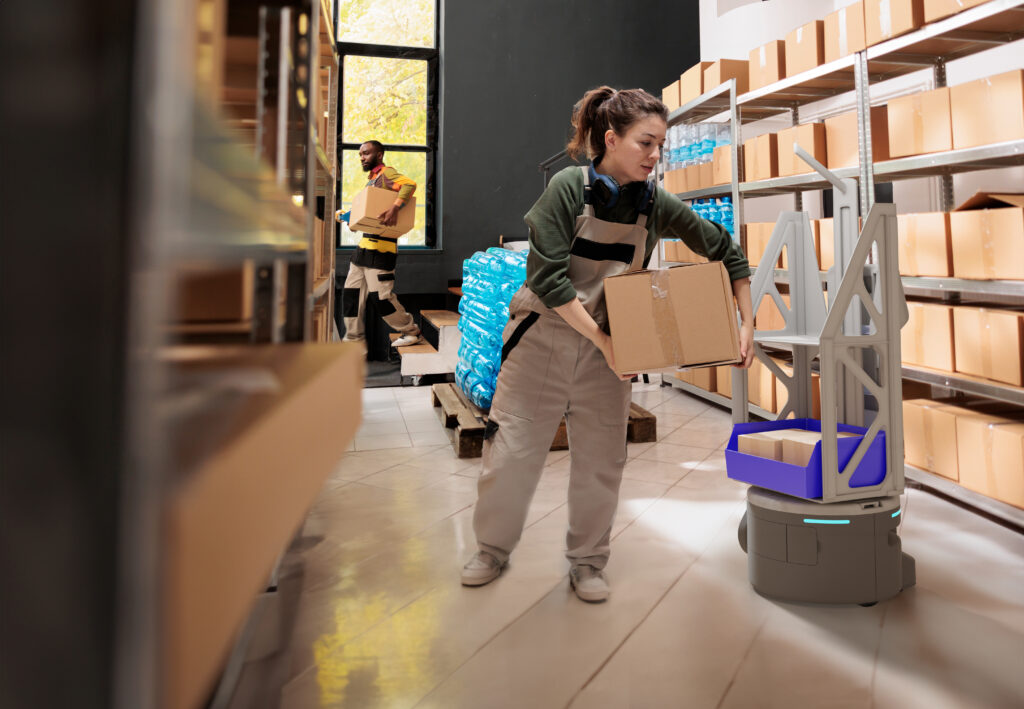
Mit der Markteinführung von uLink erweitert die United Robotics Group ihr Angebot an Robotik-Lösungen für die Bereiche Logistik, Lagerverwaltung und industrielle Fertigung. Der Roboter soll in Einzelhandels- und Logistikumgebungen wie Kaufhäusern, Supermärkten, Lagerhäusern und Fulfillment-Zentren, aber auch Fabriken und Produktionsstätten sowie Flughäfen und Gesundheitseinrichtungen zum Einsatz kommen.
Der Roboter ist mit 3D-LiDAR- und PL-LiDAR-Systemen für maximale Präzision bei der Mobilität ausgestattet. Die Plattform kann Änderungen in der Umgebung wie bestimmte Bewegungen oder Personen bzw. Maschinen sofort registrieren und entsprechend reagieren. Dabei ist er mit einem Online-Dashboard verbunden, das sowohl das Workflow-Management als auch schnelle Entscheidungen zwischen Front- und Back-of-House-Teams erleichtert.
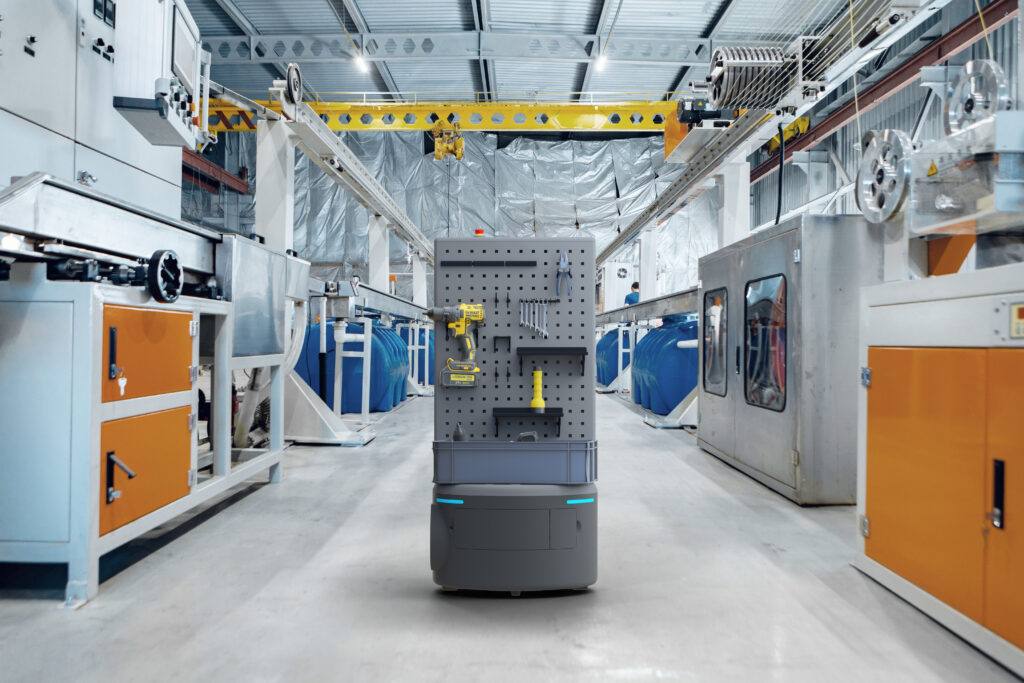
uLink hat eine lange Akkulaufzeit von bis zu 14 Stunden mit einer Ladung. Zudem verfügt die Lösung über eine intelligente, kabellose Ladefunktion, die mit einem namhaften deutschen Batteriehersteller entwickelt wurde. Damit kann sie zwischen einzelnen Arbeitsgängen automatisch zur Ladestation zurückkehren. Der Roboter entspricht den höchsten Sicherheits- und Datenschutzstandards, einschließlich der EU-Maschinenrichtlinie „Performance Level D“ sowie den DSGVO-Vorschriften.
uLink wird zusammen mit der Logistik- und Lagerverwaltungsflotte der United Robotics Group einschließlich RBWatcher und MobilePalletizer vom 22. bis 25. Mai auf dem VivaTech-Stand des Unternehmens (Halle 1, Stand G18) in Paris zu sehen sein.
uLink kann über das RaaS-Modell (Robot as a Service) der United Robotics Group ab 699 Euro / Monat gemietet oder für 19.900 Euro erworben werden.
